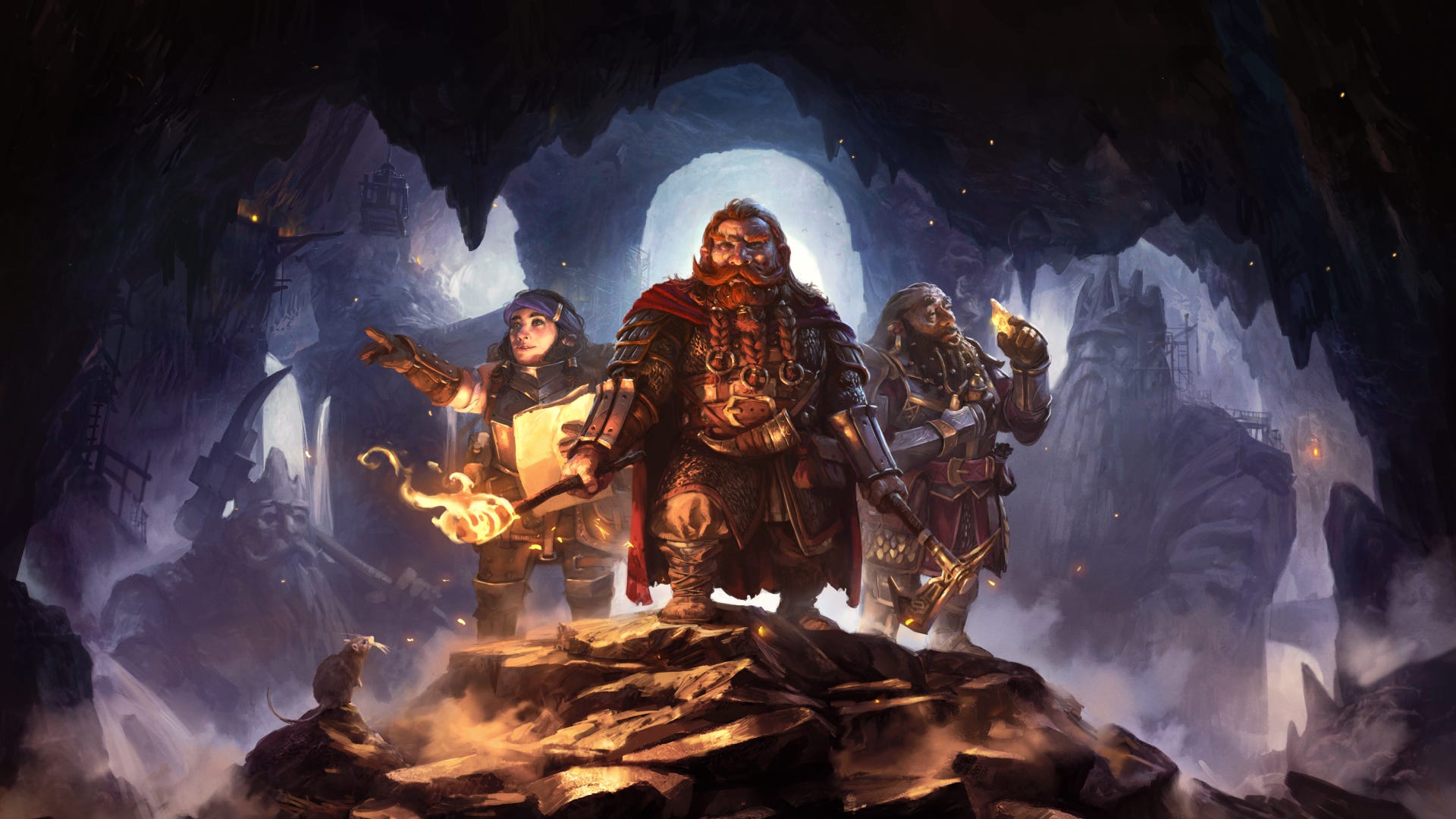
I, for one, am thrilled that we are currently seeing a spate of weird and wonderful games set in Middle-earth. Although these games take creative risks that don’t always work out, it’s fascinating to see how developers can interpret Tolkien’s legendarium in ways that are a little bit unexpected. And it’s particularly exciting when a game focuses on a specific location or people in Middle-earth to really explore them in detail. (Pencil that cosy Hobbit game releasing next year into your diaries.)
Which brings us to The Lord of the Rings: Return to Moria – a game that, as Gimli describes it in the introduction, allows the dwarves to tell their own story from their perspective. Set after the fall of Sauron and the destruction of the One Ring, Gimli has called for dwarves across Middle-earth to help him reclaim the underground kingdom of Khazad-dûm from darkness and shadow. You play as one of the members of this expedition, ready to help Gimli swap out hordes of orcs for hoards of treasure. But before you can enter Moria in an organised and orderly fashion, a mysterious explosion separates you from the rest of the group. You (and any co-op friends) wake up alone in the dark – unable to get out, and with no sign of Gimli. You venture forth to find the rest of the expedition, uncovering the secrets of Moria along the way. And so the stage is set for a game that blends survival-crafting mechanics with the lore and mystique of Tolkien’s Middle-earth.
It’s a combination that works so well, you wonder why nobody thought of it before. The dwarves are renowned for their mining and metalworking skills, making them great protagonists for a survival-crafting game. The setting of Moria ensures there is plenty of treasure and ore to be found… along with plenty of monsters. It’s a great premise in itself, but the way this location has been realised in-game is truly impressive. The environments of Khazad-dûm are beautiful and haunting, and journeying through the depths proves to be an unbelievably atmospheric experience. Yet this is a game with problems. Like an uncut gem, it’s pretty rough around the edges, and depending on your level of tolerance for jank you may find this to be an endearing experience – or one that’s simply frustrating.




